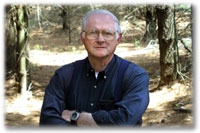This
is the time of the year, when the trees are turning color and dropping their
leaves, and there is frost is on the ground in the morning, when I think about
cranberries. Maybe it’s because, in
1955, the first job I had when I graduated from college was raking
cranberries. By hand in a bog near
Wisconsin Rapids. It was before the modern cranberry harvesting equipment was
commonly used by cranberry growers.
Wisconsin’s
history with cranberries goes back a long, long way. Cranberries are native to Wisconsin. They were well known to the Native Americans
long before the first Europeans arrived in the state. They grew abundantly in marshy areas, especially
in Waushara and Wood counties. Native
Americans ate cranberries fresh; they ground them and mixed them with cornmeal
and baked the mixture into bread. They
dried cranberries with wild game to make pemmican. Sometimes they mixed cranberries with maple
sugar to soften the berries tart taste.
Native
Americans also knew about cranberries’ medicinal qualities believing that they
calmed nerves. They also were used as
poultices to draw poison from wounds.
These early people in Wisconsin used cranberry juice to dye blankets and
rugs.
What
is the source of the name for this tart, native berry? It is believed that the early Dutch or German
settlers called the fruit “craneberries” because the cranberry stem and blossom
resembled the neck, head and beak of the crane.
Early
settlers in Wisconsin, who lived within easy traveling distance of a wild
cranberry bog, picked cranberries for their own use long before anyone grew
them commercially. Edward Sacket of New
York is credited with starting the first commercial cranberry operation in
Wisconsin. Around 1860 he purchased
seven hundred acres of bog land covered with cranberry vines north of Berlin in
Waushara County. By 1865 he was
producing more than 900 barrels a year of cranberries that sold for $15 dollars
a barrel. Soon other cranberry growers
joined Sacket and Waushara County experienced a bit of a cranberry boom.
In
addition to Waushara County, wild cranberries also grew in Jackson, Juneau,
Monroe, and Wood Counties. In 1871, the first cultivated cranberries in the Wisconsin River Valley were planted near
present-day Cranmoor in Wood County.
By1895, the center of commercial cranberry growing had shifted to Wood
County.
At
one time, cranberries were associated only with Thanksgiving and
Christmas. Not today. Cranberry juice and dried cranberries became
popular throughout the year. An
international market emerged for cranberry products, especially when the health
benefits of consuming cranberries was promoted.
Starting in 1994, Wisconsin led the nation in cranberry production out
pacing long-time leader, Massachusetts.
Have
you tried dried cranberries? They make a
great snack. A glass of cranberry juice
is a most refreshing drink. besides, it’s good for you.
THE
OLD TIMER SAYS: Cranberries are a year-around treat, low in calories, high in
flavor.
WHERE TO BUY MY BOOKS
To learn more about the history of
cranberries, see my book, Wisconsin Agriculture: A History. Buy from your local bookstore,
or buy online from the Wisconsin Historical Society bookstore, https://shop.wisconsinhistory.org/books, bookshop.org, or
purchase from the Friends of the Patterson Memorial Library in Wild Rose—a
fundraiser for them. Phone: 920-622-3835 for prices and ordering, or contact
the librarian: barnard@wildroselibrary.
Patterson Memorial Library
500 Division Street
Wild Rose, WI 54984.
www.wildroselibrary.org
If you live in the western part of the state,
stop at Ruth’s home town, Westby, visit Dregne’s. and look at their great selection of my books.
Order a book from them by calling 1-877-634-4414. They will be happy to help
you. If you live in northcentral Wisconsin,
stop at the Janke bookstore in Wausau (phone 715-845-9648). They also have a large selection of my
books.


No comments:
Post a Comment